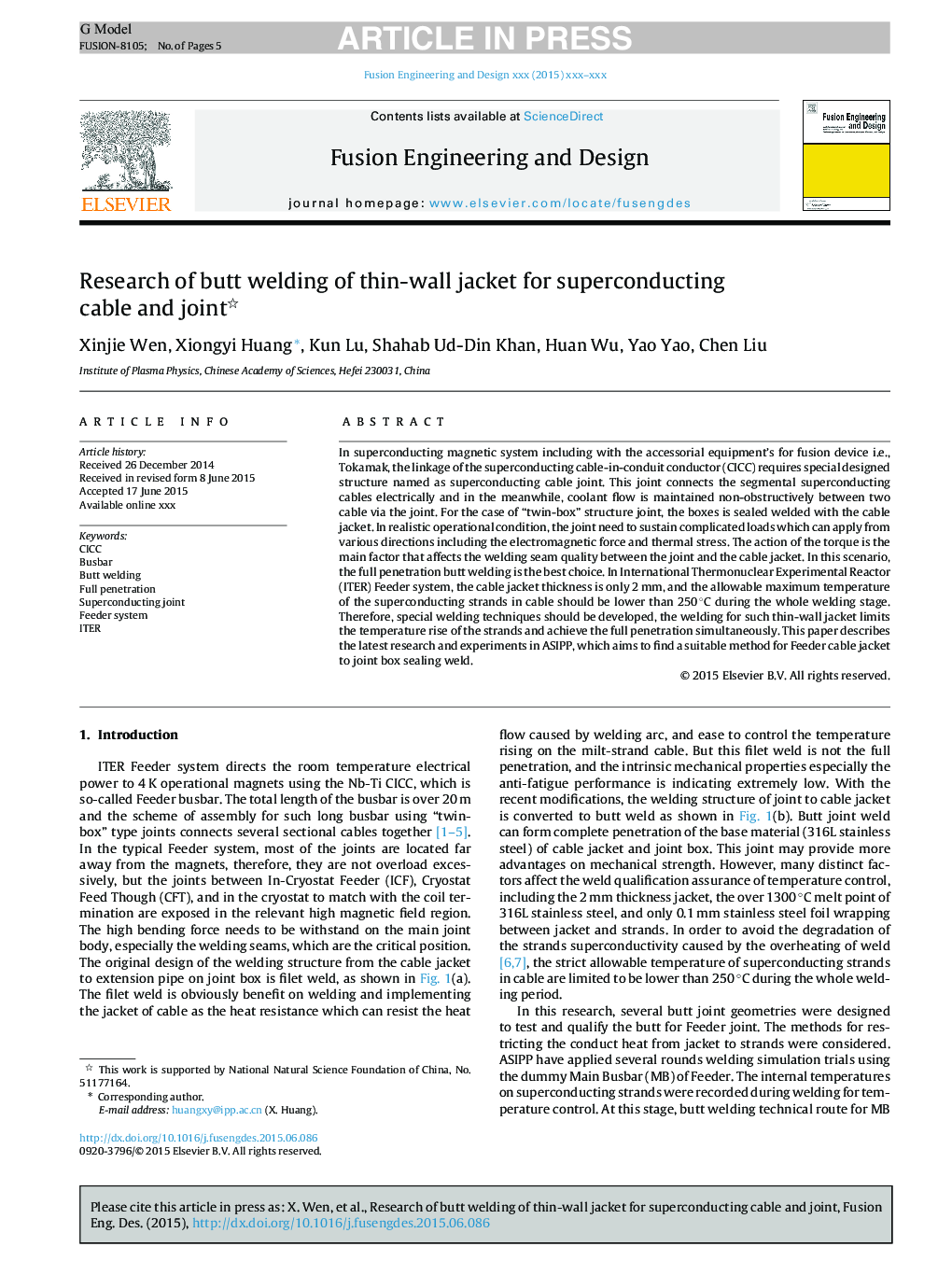| Article ID | Journal | Published Year | Pages | File Type |
|---|---|---|---|---|
| 6745729 | Fusion Engineering and Design | 2015 | 5 Pages |
Abstract
In superconducting magnetic system including with the accessorial equipment's for fusion device i.e., Tokamak, the linkage of the superconducting cable-in-conduit conductor (CICC) requires special designed structure named as superconducting cable joint. This joint connects the segmental superconducting cables electrically and in the meanwhile, coolant flow is maintained non-obstructively between two cable via the joint. For the case of “twin-box” structure joint, the boxes is sealed welded with the cable jacket. In realistic operational condition, the joint need to sustain complicated loads which can apply from various directions including the electromagnetic force and thermal stress. The action of the torque is the main factor that affects the welding seam quality between the joint and the cable jacket. In this scenario, the full penetration butt welding is the best choice. In International Thermonuclear Experimental Reactor (ITER) Feeder system, the cable jacket thickness is only 2 mm, and the allowable maximum temperature of the superconducting strands in cable should be lower than 250 °C during the whole welding stage. Therefore, special welding techniques should be developed, the welding for such thin-wall jacket limits the temperature rise of the strands and achieve the full penetration simultaneously. This paper describes the latest research and experiments in ASIPP, which aims to find a suitable method for Feeder cable jacket to joint box sealing weld.
Related Topics
Physical Sciences and Engineering
Energy
Energy Engineering and Power Technology
Authors
Xinjie Wen, Xiongyi Huang, Kun Lu, Shahab Ud-Din Khan, Huan Wu, Yao Yao, Chen Liu,
